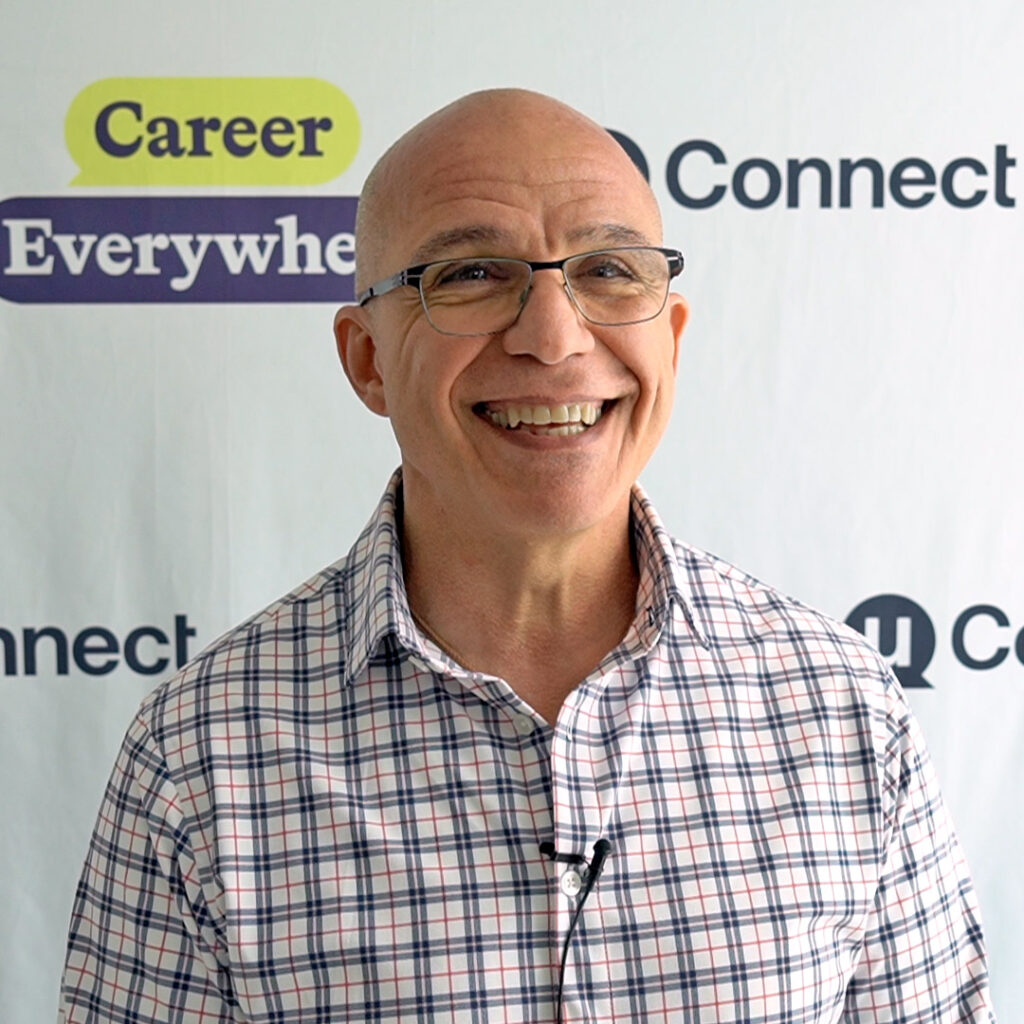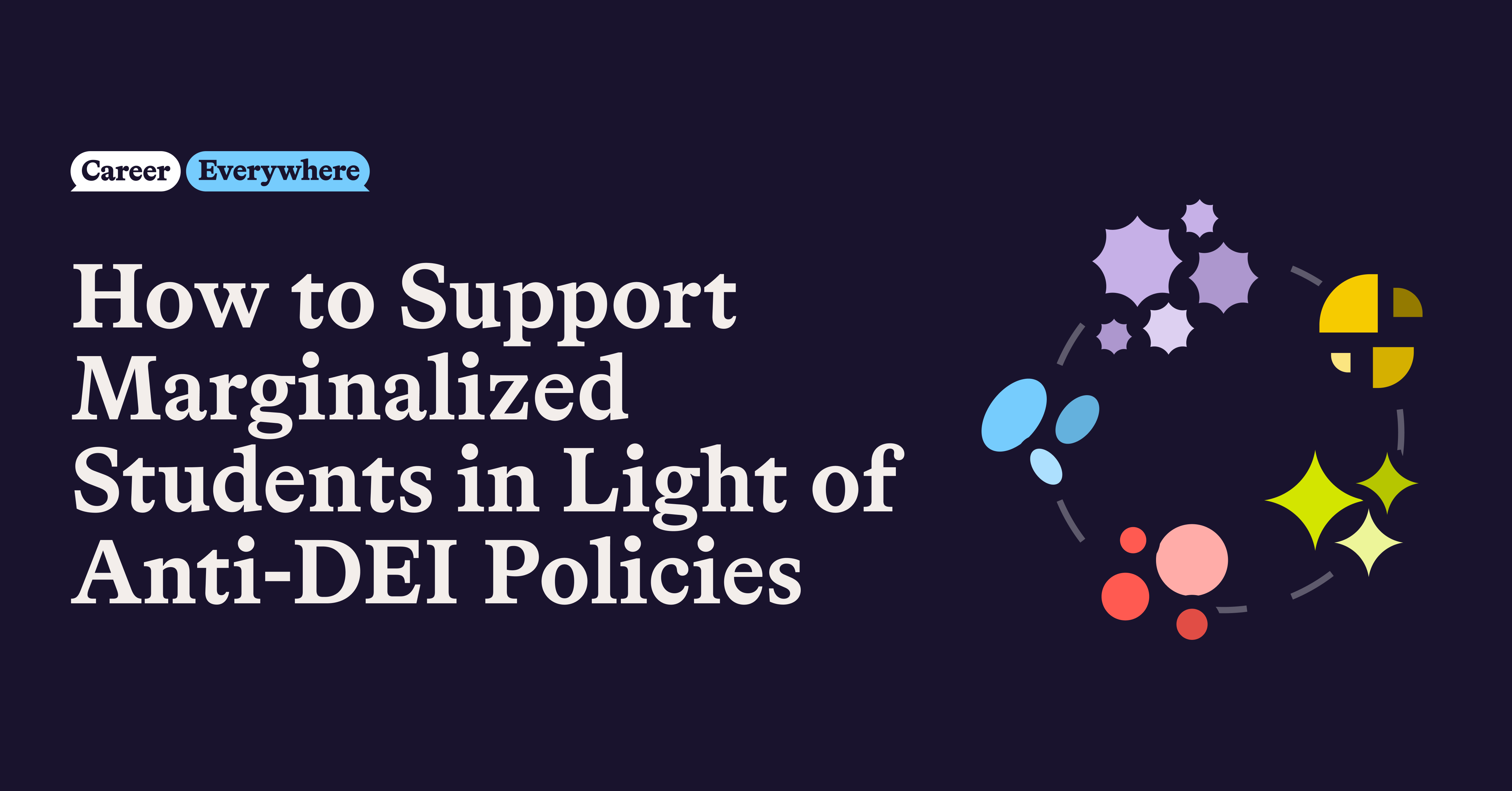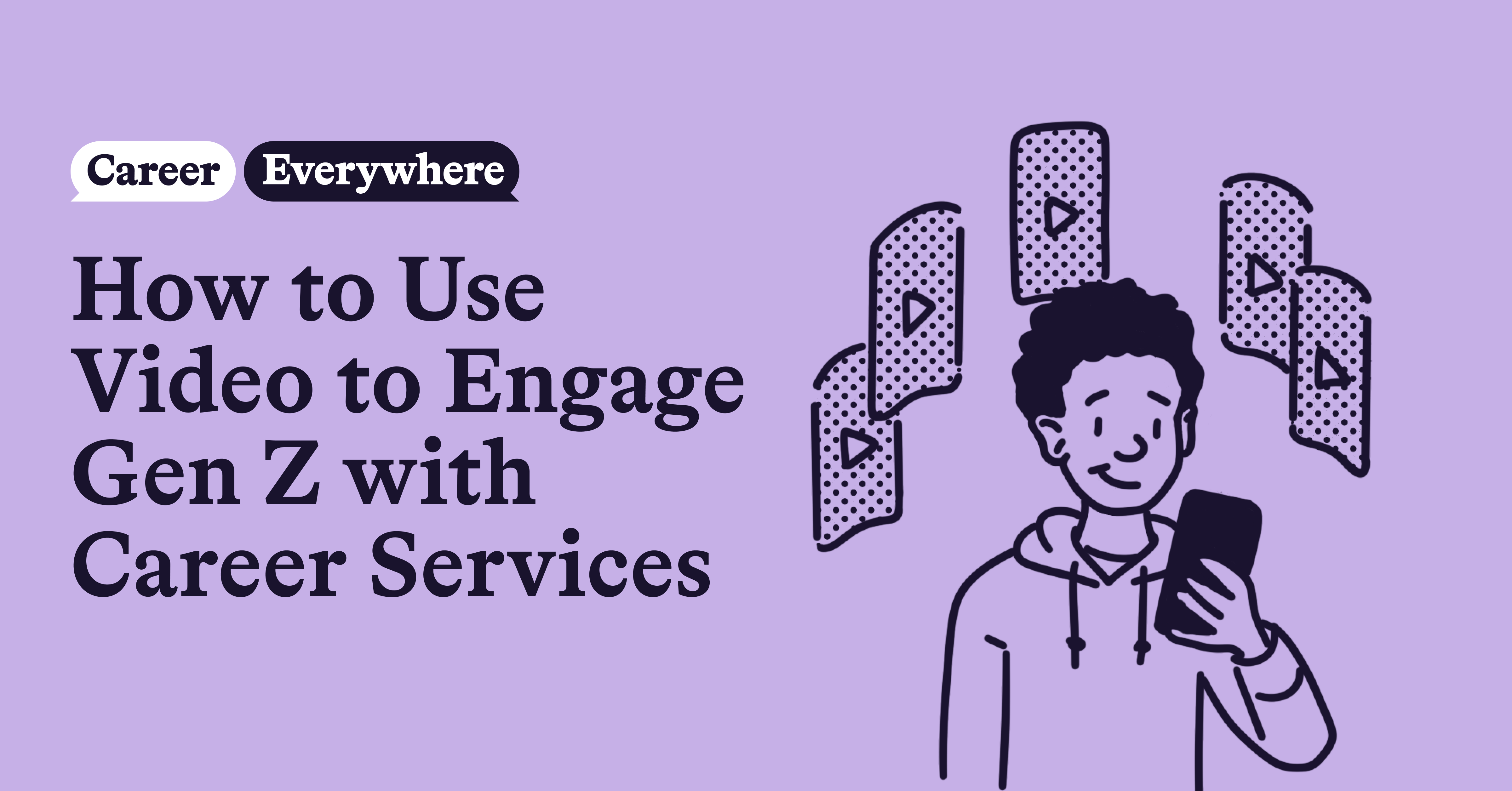
Career services professionals are in the perfect position to be influential thought leaders on campus.
Serving as the bridge between students, employers, and institutions of higher education, career leaders are among the most in-tune with hiring trends, job market outlooks, in-demand skills, student strengths and weaknesses, institutional goals, and more. They can connect the external trends of the job market with the internal strategies of their career center and institution.

“You see evidence of this [thought leadership] when career services is brought into the discussions, when there is a perception in the community that, ‘Career services has something to say about this, and we should make sure we hear what they have to say,’” said Manny Contomanolis, Associate Dean for Academic Engagement at Harvard University.
In an era marked by endless discussions about the ROI of a college degree and the importance of career outcomes, it’s become more important than ever for career services leaders to step into thought leader roles.
But where do you start?
We recently sat down with Contomanolis for an in-depth discussion about this exact question: How can career services professionals become thought leaders on campus?
An accomplished thought leader himself, both on and off campus, Contomanolis shares his insights on what thought leadership looks like, how career professionals can become thought leaders, how they can use that status to elevate the role of the career center on campus, and more.
To learn more from Contomanolis about how to become a thought leader on campus, check out his episode of the Career Everywhere podcast.
What is thought leadership?
Generally speaking, a thought leader is someone who has become a go-to authority in a given specialization or topic area. For example, Seth Godin is considered a thought leader in the marketing and entrepreneurship space, Emily Calandrelli is a thought leader around science and women in STEM, and Shawn VanDerziel of NACE is a known thought leader in our space of career services.
When it comes to thought leadership in a career center and on a college campus, Contomanolis describes it as the ability of an individual or organization to influence others through expertise, innovative ideas, and insights. It involves being recognized as a leading authority, being sought after for strategic discussions, and demonstrating forward-thinking by anticipating trends in your field of expertise.
Trust and credibility are fundamental, with thought leaders providing data-supported and well-rounded insights that connect broader industry trends to specific organizational needs, ultimately shaping and advancing their field.
“In a nutshell, when you think about an institutional brand or a personal brand, thought leadership is an important dimension of that,” Contomanolis said, emphasizing the influence these leaders have in both the visible and invisible journeys towards progress.
How can career services professionals become thought leaders on campus?
According to Contomanolis, there are several ways that career services professionals can step into thought leadership roles—and he encourages career leaders to go for it, despite the challenges and bureaucracy they may face from faculty, deans, senior leaders, etc.
Rather than focusing on what you can’t do, he encourages career services professionals to lean into their individual and team strengths to make it happen.
“You can do this. I don’t care what size office you are, from a one-person shop to a big organization, you can absolutely establish yourself and your office as a thought leader. It takes time and effort. It takes focus,” Contomanolis said. “As I always like to say, the only difference between a flashlight and a laser is focus and intensity. And it also takes a plan.”
The first step in that plan? Figuring out where your thought leadership and goals might fit into the context of your institution. And that starts by approaching the process with an open mind.
1. Define what thought leadership can look like in your institutional setting
Start with a self-analysis to understand what your office does well and where it needs improvement, aligning these findings with the institution’s mission and values.
“You have to be prepared to maybe disclose, uncover, talk about, and expose not only the things that an office does well, or that you do well as a member or leader of that office. But also those gaps in perceptions, those things that maybe we don’t do as well,” Contomanolis said.
Next, engage with senior leadership to clarify expectations and ensure alignment between your goals and the institution’s needs, saving time, resources, and a lot of headaches along the way. Track and assess your performance, and effectively communicate your achievements and areas for growth.
Contomanolis said thought leadership also involves understanding the culture, pressures, and priorities of your office’s direct leadership, and “leading up” to win over those in higher positions.
Speaking of leadership, while Contomanolis acknowledges that the director or leader of a career center is certainly well-positioned to be a thought leader, they are not the only ones qualified to do so.
“I advocate that anybody within the career services organization, regardless of role, can demonstrate thought leadership in their particular areas of responsibility,” Contomanolis said. “And that collectively, this kind of expertise is woven together into this idea that as an office, we have this incredible team that’s staying abreast of what’s happening, that is thinking about what those implications are for this particular setting.”
Ultimately, becoming a thought leader requires demonstrating the office’s value through strategic thinking, effective storytelling to a wide variety of audiences, and fostering partnerships that highlight their expertise and strengthen influence and impact.
“One of the tangible ways thought leadership contributes is the way the office and team are positioned in the broader way that the university is thinking,” Contomanolis said.
“For example, being pointed out as a center for excellence, as the office that accomplishes what needs to be done and does it well. All of these things influence funding support. They influence relationships and where career services can be involved or brought into discussions, especially when they go beyond just career services to impact and touch on other areas of university life.”
2. Ask hard questions and get alignment with senior leadership
Engage with senior leadership by asking tough questions to understand their expectations and what they consider to be a successful career services organization.
Use available data on career trends to inform your strategies and relay these insights. Communicate these findings effectively to different stakeholders, such as faculty, administrators, and external partners, tailoring your message to each audience.
Contomanolis also recommends developing a collaborative mindset by using “Yes, and…” responses to establish partnerships, build trust, and find solutions.
“It communicates that I’m trying to find a way to make it work, as opposed to trying to identify reasons why it’s not going to work,” Contomanolis said.
3. Connect external trends to institutional goals
Trends may be tricky territory if you’re focusing on long-term, evergreen goals, but there is a way to utilize them for your specific institution.
Contomanolis suggests leveraging data and insights from sources like NACE, foundation reports, and workforce trends. Start by analyzing how these external trends relate to your institution, its learners, and its setting. This process helps inform strategic focuses, such as aligning career services with shifting market demands.
For instance, understanding changes in hiring practices and the evaluation of talent can highlight the ongoing relevance of fields like arts and humanities by emphasizing the skills and competencies these disciplines develop. These insights allow you to tell a compelling story about the value of these programs.
Communicating this information effectively to stakeholders is crucial. Recognize that thought leadership is an ongoing process, requiring constant engagement with evolving trends and practices. It’s not just about benchmarking against peer institutions but also about understanding broader hiring and recruiting shifts and their implications.
“That ability to think on multiple planes, to be in the head of the recruiter, in the head of the career services person, in the head of those institutional stakeholders, understanding, forming those relationships, having those communication pipelines… Combine all those things together, and that’s typically representative of thought leaders and thought leader organizations,” Contomanolis said.
4. Stay up-to-date with external trends
To stay up-to-date with external trends in career services, Contomanolis recommends following these strategies:
1. Join professional associations: Engage with groups like NACE, regional career organizations, and benchmarking groups (e.g., IvyPlus) to share information and stay current on industry trends.
2. Monitor public resources: Regularly review information from sources such as the World Economic Forum for global talent and development trends.
3. Engage with employer partners: Schedule regular meetings with employer partners to discuss hiring trends and changes in recruitment practices.
4. Leverage online communities: Participate in LinkedIn groups and other online forums focused on specific industries or broader hiring trends. Or join career services-specific communities like the Career Everywhere community to bounce ideas off of other career leaders.
5. Conduct research: Continuously explore and curate information from universities, research centers, and global forums, aligning findings with the needs of your institution and learners.
6. Learn broadly: Stay open to insights from a wide range of institutions, including community colleges, to gain diverse perspectives and innovative ideas.
5. Communicate your insights with institutional stakeholders
You’ve done the external research. Now what? Who should know this information, and what is the best way to relay it to them?
A master communicator in his own right, Contomanolis recommends creating compelling narratives that demonstrate the impact of external trends on the institution and its learners. For example, sharing a white paper on hiring trends in the arts and humanities with faculty can be a powerful way to illustrate the practical implications of these trends.
Pro tip: Tailor your messaging to your different audiences, including faculty, staff, administrators, employer partners, students, etc. Each group has its own goals and interests.
“The ability to bring that information together, to curate it, to tell a story that’s of interest to those faculty and other stakeholders and make it relevant to the particular institutional setting, and related to the activities that the office is undertaking is incredibly powerful, and is a very visible sign of thought leadership,” Contomanolis said.
6. Demonstrate your career center’s value proposition
According to Contomanolis, being able to clearly articulate your career center’s value proposition is the ultimate thought leadership. Here are a few ways to do that:
- Start by acknowledging the challenges you face, but focus on the incremental progress you can make. Thought leadership is a continuous effort, not a one-time achievement, and it requires staying updated with the evolving nature of your field.
- Benchmark against peer institutions, but go beyond that by understanding and communicating broader trends and how they affect your strategies. Being knowledgable about industry shifts toward skills and competencies is essential.
- Think strategically from multiple perspectives—those of recruiters, career services professionals, and institutional stakeholders. Build strong relationships and communication channels with these groups to create a comprehensive understanding of the career landscape.
Ultimately, successful thought leadership communication involves leveraging data, aligning it with institutional goals, and demonstrating the office’s value proposition in a cooperative and proactive manner. This approach not only establishes the career services office as a knowledgeable resource but also fosters trust and collaboration across the institution.
“At the end of the day, no office or individual can really be a thought leader if you’re not demonstrating the value proposition,” Contomanolis said. “It’s amazing how successful you can be if you focus on getting things done, and do it in a cooperative, positive way.”
How can career services teams use thought leadership to advance the mission of the career center?
One major perk of being viewed as a thought leader on campus? Now, you have other stakeholders’ attention. Here are a few ways to use that to your advantage as you work to elevate the role of career services on campus:
- Consistently meet and articulate your goals, ensuring stakeholders understand the rationale behind your actions. This ongoing process builds the office’s reputation.
- Establish a track record of performance and integrity. This trust positions the career center as a priority for resource allocation and investment within the institution, especially in a competitive, zero-sum environment.
- Thought leadership enhances the office’s influence within the university, leading to recognition as a center of excellence and a coveted seat at the decision-making table.
- A strong reputation attracts high-caliber talent to the team. When the office is known for its excellence and respect within the university, it becomes a desirable workplace for prospective team members.
- By leveraging thought leadership, career services can contribute to and influence other areas of university life. This broader impact fosters a sense of pride and collective achievement within the team.
- Building strong relationships and communication channels enhances the office’s ability to integrate career implications into broader institutional goals.
How can career services leaders make time for thought leadership?
Thought leadership can feel like an overwhelming task, especially when there are a million other things to do day-to-day, acknowledges Contomanolis. But with the right mindset, it’s possible to be a top thought leader at your institution.
Here are a few tips from Contomanolis:
- Tasks and commitments should be scheduled and evaluated with the understanding that if something new is added, something else must be dropped or delegated.
- Set aside time for thinking. For career leaders, this may involve challenging the belief that you must always be available for immediate needs like student consultations or team meetings.
- Thought leadership shouldn’t rest solely on one person’s shoulders. Leaders can form internal groups dedicated to exploring and discussing relevant issues, leveraging the diversity of perspectives within their team.
- Sometimes, advancing in thought leadership requires investing personal time outside regular working hours. This might involve dedicating time on weekends or evenings for research, reflection, or planning.
- Establishing advisory boards involving faculty, students, employers, and other stakeholders can provide valuable feedback and insights—and foster a collaborative ecosystem for thought leadership.
Conclusion
Thought leadership is, ultimately, all about knowing your career center’s story, complementing it with external trends and data, aligning it with institutional goals, and communicating all of that information clearly and strategically with the necessary stakeholders.
And while it can be a lot of work, it’s well worth the time and effort. Just ask Contomanolis who has used his thought leader status at Harvard to elevate the role of the career center, strengthen his team, earn the respect of his peers (on and off campus), and advance his own career.
“It’s that feeling of pride that the office feels collectively, and that individual team members feel for being part of that organization,” Contomanolis said.
To learn more from Contomanolis about how to become a thought leader on campus, check out his episode of the Career Everywhere podcast.


